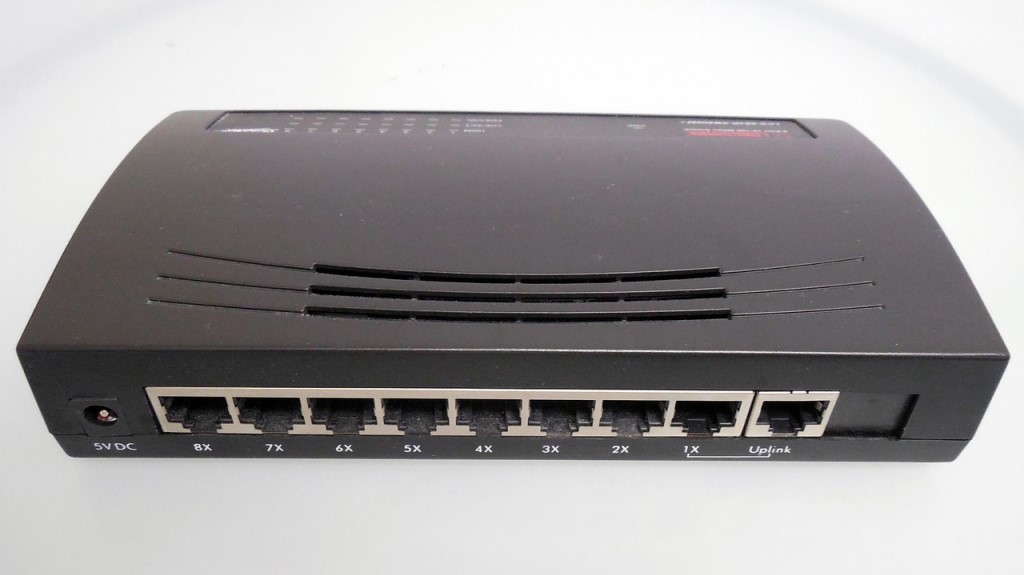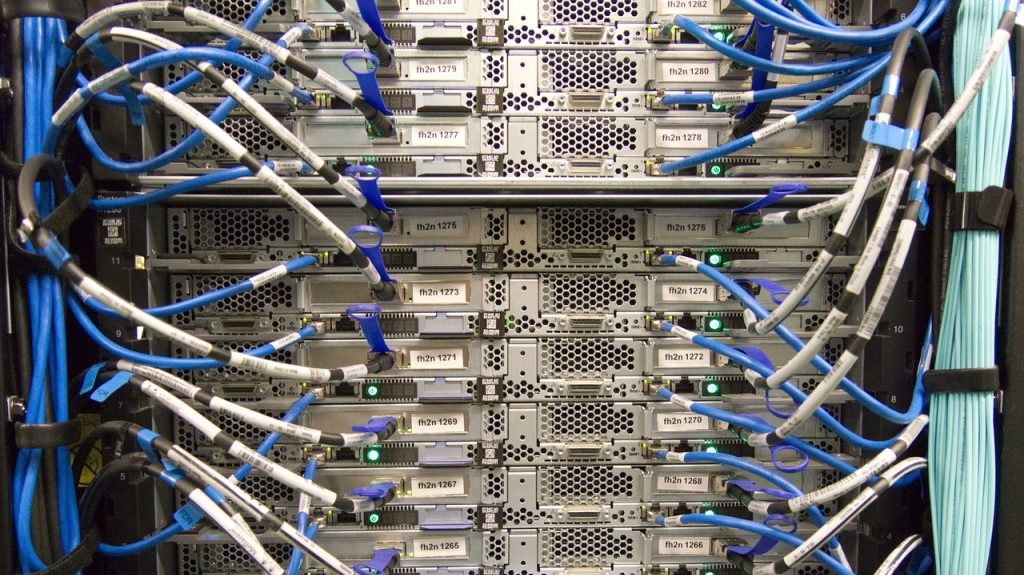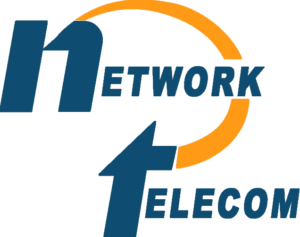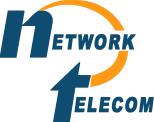Ever felt overwhelmed by the telecom jargon (technical terms and acronyms) that seems to dominate the world of telecommunications? You’re not alone. Whether you’re a small business owner trying to choose the right phone system or an IT professional tasked with managing your company’s network, understanding telecom jargon can be a daunting task.
In this blog post, we’ll break down some of the most common telecom terms and concepts, making them easy to understand and apply to your business needs. By the end, you’ll feel more confident navigating the world of telecommunications and making informed decisions for your organization. Read the entire post or click on the term that you would like explained right away:
- SIP – Session Initiation Protocol
- VoIP – Voice Over Internet Protocol
- PBX – Private Branch Exchange
- UCaaS – Unifice Communications as a Service
- SIP Trunking
- IVR – Interactive Voice Response
- PRI – Primary Rate Interface
- SBC – Session Border Controller
- CTI – Computer Telephony Integration
- Network Packet
If you are looking for telecom help or advice, contact us. We have been in the telecommunications business for over 40 years and can address any issue you might have.
Telecom Jargon Demystified
1. SIP – Session Initiation Protocol

SIP can be used for various types of communication, including voice calls, video conferencing, and instant messaging.
SIP (Session Initiation Protocol) is like a traffic cop for your phone calls and video chats. It’s the set of rules that devices follow to set up, manage, and tear down communication sessions over the Internet.
Think of it this way: When you want to call a friend, SIP is responsible for:
- Finding your friend: It looks up their phone number or IP address.
- Setting up a connection: SIP ensures both your phone and your friend’s phone can talk to each other.
- Managing the call: It handles things like putting you on hold, transferring calls, and ending the conversation.
Why is SIP important?
- Flexibility: SIP can be used for various types of communication, including voice calls, video conferencing, and instant messaging.
- Cost-effective: It’s often more affordable than traditional phone systems, especially for businesses with multiple locations.
- Scalability: SIP can easily handle growing communication needs.
By understanding SIP, you can make more informed decisions about your business’s telecommunications infrastructure.
Note: While SIP is a type of VoIP (Voice over Internet Protocol), not all VoIP meets the standards of SIP.
2. VoIP – Voice Over Internet Protocol

Telecom jargon: VoIP calls are often cheaper than traditional phone calls.
VoIP (Voice Over Internet Protocol) is like making a phone call using the internet instead of traditional phone lines. It’s similar to how you use video chat apps like Zoom or FaceTime but for regular phone calls.
Here’s a simple breakdown:
- Conversion: When you make a VoIP call, your voice is converted into digital signals.
- Internet Transmission: These digital signals are then sent over the internet to the person you’re calling.
- Decoding: The recipient’s device receives the signals and converts them back into sound.
Why Use VoIP?
- Cost-effective: VoIP calls are often cheaper than traditional phone calls, especially for long-distance or international calls.
- Flexibility: You can make and receive calls from almost anywhere with an internet connection, including computers, smartphones, and tablets.
- Additional features: VoIP often offers features like call forwarding, voicemail-to-email, and conference calling.
In essence, VoIP allows you to use the internet as your phone network, offering more flexibility and potentially saving you money.
3. PBX – Private Branch Exchange

The PBX is like a town’s switchboard operator.
PBX (Private Branch Exchange) is like a private phone network within a company. It’s the system that manages how calls are made and received within the office, and how they connect to the outside world.
Imagine your office as a small town. The PBX is like the town’s switchboard operator. It knows who’s connected to the network, where to route calls, and how to handle features like call forwarding, voicemail, and conference calling.
Key Benefits of a PBX:
- Internal communication: Employees can easily call each other without paying for external calls.
- Call management: Features like call forwarding, voicemail, and call waiting make it easier to manage calls.
- Integration: PBXs can often be integrated with other business systems like CRM software.
- Cost savings: In many cases, PBXs can help businesses save money on phone bills.
Essentially, a PBX is the backbone of a company’s communication system, providing a reliable and efficient way for employees to connect with each other and the outside world.
4. UCaaS – Unifice Communications as a Service

Telecom Jargon: UCaaS (Unified Communications as a Service) brings together various communication tools into one platform.
UCaaS (Unified Communications as a Service) is like having a communication toolbox in the cloud. It brings together various communication tools into one platform, making it easier for businesses to connect and collaborate.
Imagine a toolbox containing:
- A phone: For making and receiving calls.
- A chat app: For instant messaging and group chats.
- A video conferencing tool: For meetings and presentations.
- A file-sharing service: For sharing documents and other files.
UCaaS combines all of these tools into a single platform. This means that employees can easily switch between different communication methods without having to learn multiple systems. It’s like having everything you need to communicate effectively in one place.
Benefits of UCaaS:
- Improved collaboration: Teams can work together more efficiently.
- Increased productivity: Employees can communicate more quickly and easily.
- Cost savings: UCaaS can be more cost-effective than traditional communication systems.
- Scalability: UCaaS can easily adapt to your business’s changing needs.
In essence, UCaaS is a powerful tool that can help businesses improve communication and collaboration.
5. SIP Trunking

SIP trunking is like a modern, high-speed highway that replaces those old phone lines.
Imagine your business phone system as a house. The house needs a connection to the outside world to make and receive calls. This connection is traditionally provided by phone lines.
SIP trunking is like a modern, high-speed highway that replaces those old phone lines. It uses the internet to connect your business phone system to the outside world.
Key Benefits of SIP Trunking:
- Flexibility: You can easily add or remove phone lines as your business grows or shrinks.
- Cost-effective: SIP trunking can often be more affordable than traditional phone lines.
- Features: It offers advanced features like call forwarding, voicemail-to-email, and conference calling.
In essence, SIP trunking is a more efficient and flexible way for businesses to connect to the public phone network.
6. IVR – Interactive Voice Response

Telecom Jargon: The IVR might say something like, “Press 1 for account balance, 2 for customer service, or 3 to pay a bill.”
IVR (Interactive Voice Response) is like a virtual receptionist that greets callers and guides them through a menu of options. It’s the system that lets you press buttons on your phone to choose what you want to do, like checking your voicemail or speaking to a customer service representative.
Imagine you’re calling a bank. The IVR might say something like, “Press 1 for account balance, 2 for customer service, or 3 to pay a bill.” When you press a button, the IVR directs your call to the appropriate department or person.
Key Benefits of IVR:
- Efficiency: IVRs can handle a large number of calls quickly and efficiently.
- Customer service: They can provide basic information and assistance without requiring human intervention.
- Cost savings: IVRs can reduce the need for human customer service representatives.
In essence, IVR is a technology that automates many common phone interactions, making it easier for businesses to provide customer service.
7. PRI – Primary Rate Interface

PRI allows for many phone calls to be made or received simultaneously over a single connection.
Imagine your business phone system as a house. The house needs a connection to the outside world to make and receive calls. This connection is traditionally provided by phone lines.
PRI (Primary Rate Interface) is like a highway that carries multiple phone calls over a single line. It’s a way to connect your business phone system to the outside world using a digital connection.
Key Benefits of PRI:
- Multiple calls: PRI allows for many phone calls to be made or received simultaneously over a single connection.
- Reliability: PRI is known for its reliability and stability, making it a good choice for businesses that need a robust phone system.
- Features: PRI often includes features like call forwarding, voicemail, and conference calling.
While PRI was once a popular choice for businesses, it’s becoming less common as newer technologies like VoIP (Voice over Internet Protocol) offer similar benefits with more flexibility and often at a lower cost.
8. SBC – Session Border Controller

SBC protects against security threats like spam calls, hacking, and unauthorized access.
Imagine an SBC as a traffic cop at the border of two different countries. Just like a traffic cop ensures vehicles follow the rules and can safely cross the border, an SBC ensures that communication sessions (like phone calls or video chats) can safely and reliably travel between different networks.
Here’s a Breakdown of What an SBC Does:
- Security: It protects against security threats like spam calls, hacking, and unauthorized access.
- Translation: SBCs can translate communication protocols, ensuring that devices from different manufacturers can talk to each other.
- Quality control: It helps maintain good call quality by managing factors like bandwidth and network congestion.
- Routing: SBCs can direct calls to the correct destination, even if there are changes in network configuration.
In essence, an SBC is a vital piece of equipment for businesses that rely on VoIP or other internet-based communication technologies. It helps ensure that these communications are secure, reliable, and high-quality.
9. CTI – Computer Telephony Integration

CTI can automatically pop up customer information on your screen when a call comes in.
CTI, or Computer Telephony Integration, is a technology that bridges the gap between your computer systems and your phone system. It allows your computer software to interact with your phone calls, making tasks like managing customer calls, placing calls from your computer, and integrating phone information with other business systems easier.
Think of it like a translator that helps your computer and phone “talk” to each other. For example, CTI can automatically pop up customer information on your screen when a call comes in, or it can allow you to make calls directly from your CRM software.
10. Network Packet

Telecom Jargon: A network packet a small unit of data that contains a portion of a larger message.
Imagine sending a letter through the mail. Instead of sending the entire letter at once, you break it down into smaller pieces, or packets, and seal each one in an envelope. Each envelope has the sender’s and recipient’s addresses, as well as a number to indicate its place in the sequence of packets.
A network packet is like one of those envelopes. It’s a small unit of data that contains a portion of a larger message, along with information that helps it find its way to the correct destination. When you send an email, a picture, or even a simple webpage, it’s broken down into countless packets and sent over the internet. These packets are then reassembled at the other end to form the complete message.
11. Elements of a Phone System

When you speak into your phone, the transmitter converts your voice into electrical signals.
A phone system typically consists of three main components:
- Transmitter: This is the device that converts sound waves (your voice) into electrical signals. It’s essentially the mouthpiece of your phone.
- Transmission Medium: This is the channel through which the electrical signals travel. It can be a copper wire, a fibre optic cable, or even a wireless connection like cellular or Wi-Fi.
- Receiver: This is the device that converts the electrical signals back into sound waves so you can hear the other person. It’s the earpiece of your phone.
These three components work together to allow you to communicate with others. When you speak into your phone, the transmitter converts your voice into electrical signals. These signals travel through the transmission medium to the other person’s phone. The receiver at the other end then converts the electrical signals back into sound waves, allowing the other person to hear you.
12. CCaaS – Contact Center as a Service

CaaS is a platform that provides all the tools and features you need to manage customer interactions.
CCaaS (Contact Center as a Service) is like having a virtual call center in the cloud. It’s a platform that provides all the tools and features you need to manage customer interactions, from phone calls and emails to live chat and social media messages.
Think of it as a one-stop shop for your customer service needs.
CCaaS Platforms Typically Include Features Like:
- Call routing: Directs calls to the appropriate agent.
- IVR (Interactive Voice Response): Provides automated menus for callers.
- Agent scripting: Provides agents with scripts to follow during calls.
- Analytics: Tracks key performance indicators (KPIs) like call handle time and customer satisfaction.
- Integration: This can be integrated with other business systems like CRM software.
The biggest advantage of CCaaS is that it’s a cloud-based service. This means you don’t need to invest in expensive hardware or software. You simply pay a monthly fee and access the platform online.
13. PSTN – Public Switched Telephone Network

Telecom Jargon: PSTN is the oldest and most established way to make phone calls.
PSTN (Public Switched Telephone Network) is like the highway system for traditional phone calls. It’s the network of interconnected phone lines and switches that allows you to make calls to anyone, anywhere in the world.
Imagine the PSTN as a vast network of roads. When you dial a phone number, your call travels through this network, following a specific route to reach the person you’re calling.
Key Characteristics of PSTN:
- Traditional: It’s the oldest and most established way to make phone calls.
- Physical infrastructure: Relies on physical infrastructure like copper wires and switching stations.
- Geographic limitations: This can be limited by geographic distance and infrastructure availability.
While PSTN is still used, it’s gradually being replaced by newer technologies like VoIP (Voice over Internet Protocol), which offers more flexibility, features, and often lower costs.
14. Endpoint

An endpoint is any device that can send or receive information over a network.
In telecommunications, an endpoint is simply a device that can send or receive information over a network. Think of it as the starting or ending point of a communication journey.
Examples of Endpoints Include:
- Computers: Desktops, laptops, and servers
- Phones: Landline phones, smartphones, and softphones
- Tablets: iPads, Android tablets
- IoT devices: Smart home devices, sensors, and more
Essentially, any device that can connect to a network and communicate with other devices is an endpoint.
15. LAN – Local Area Network

A LAN is a way to connect multiple devices within a limited area, allowing them to communicate and share resources.
Imagine your home as a small network. Your computer, smartphone, and gaming console are all connected to a central hub, like a router, allowing them to share information and resources. This interconnected group of devices is a Local Area Network (LAN).
Key Points about LANs:
- Limited area: LANs are confined to a specific location, typically within a building or a small campus.
- Shared resources: Devices on a LAN can share files, printers, and internet access.
- Networking devices: LANs often use devices like routers, switches, and cables to connect devices.
- Examples: Your home Wi-Fi network, a school’s computer network, or an office’s internal network are all examples of local area networks.
Essentially, a LAN is a way to connect multiple devices within a limited area, allowing them to communicate and share resources.
16. WAN – Wide Area Network

A WAN is a large-scale network that allows devices in different locations to communicate and share data.
Imagine a wide, sprawling network connecting cities and countries. This is similar to a Wide Area Network (WAN). While a LAN (Local Area Network) connects devices within a limited area, a WAN connects networks across vast distances.
Key Points about WANs:
- Large scale: WANs span multiple geographic locations, often connecting cities, states, or even countries.
- Network of networks: WANs are essentially networks of networks, connecting multiple LANs together.
- Long distances: They use technologies like leased lines, VPNs, or satellite connections to transmit data over long distances.
- Examples: The internet is the largest WAN, connecting countless devices worldwide. Businesses with multiple offices often use WANs to connect their local networks.
In essence, a WAN is a large-scale network that allows devices in different locations to communicate and share data.
17. Routers and Switches

Routers and switches act like traffic controllers, ensuring data packets reach their intended destinations.
Routers and switches are essential components of any network, whether it’s a small home network or a large corporate one. They act like traffic controllers, ensuring data packets reach their intended destinations.
Routers: The Inter-Network Traffic Cops
- Function: Routers connect multiple networks together. They determine the best path for data packets to travel from one network to another.
- Example: Your home router connects your local network (your computers, phones, etc.) to the internet.
- Key role: Routers are responsible for routing data packets between different networks, including LANs (Local Area Networks) and WANs (Wide Area Networks).
Switches: The Intra-Network Traffic Controllers
- Function: Switches connect devices within the same network. They efficiently forward data packets directly to their intended recipients.
- Example: In your home, a switch might connect multiple computers or gaming consoles to your router.
- Key role: Switches optimize communication within a network by ensuring data packets reach the correct device without unnecessary detours.
In Simpler Terms:
Routers are like traffic controllers at the intersections of highways, directing traffic between different cities.
Switches are like the traffic controllers within a city, ensuring cars get to their specific destinations efficiently.
Both routers and switches play crucial roles in ensuring smooth and efficient data transmission within a network.
18. ACD – Automatic Call Distributor

Telecom Jargon: ACD is like a virtual receptionist that directs incoming calls to the appropriate agent.
ACD (Automatic Call Distributor) is like a virtual receptionist that directs incoming calls to the appropriate agent. It’s a system that helps businesses manage call volume efficiently and ensure that customers are connected to the right person.
How It Works:
- Call routing: When a customer calls a business, the ACD determines the best agent to handle the call based on factors like call volume, agent availability, and the customer’s needs.
- Queue management: If all agents are busy, the ACD can place callers in a queue and provide them with estimated wait times.
- Call distribution: Once an agent becomes available, the ACD routes the call to them.
Benefits of Using an ACD:
- Improved customer satisfaction: ACD can help ensure that customers are connected to the right agent quickly, reducing wait times and improving their overall experience.
- Increased efficiency: By automatically routing calls to available agents, ACD can help businesses improve their call center efficiency.
- Better call management: ACD can provide valuable data and analytics on call volume, agent performance, and other key metrics.
In essence, ACD is a valuable tool for businesses that want to improve their customer service and call center operations.
19. QoS – Quality of Service

Telecom Jargon: QoS allows you to prioritize certain types of traffic based on your needs.
QoS (Quality of Service) is like a traffic cop on a busy highway. It’s a set of rules and mechanisms that ensure certain types of data packets get priority over others. This helps guarantee a consistent level of performance for critical applications.
Imagine a highway with different lanes:
- Fast lane: For important data like video calls or real-time applications.
- Regular lane: For less critical data like emails or web browsing.
QoS ensures that traffic in the fast lane gets priority, so important data is delivered quickly and reliably.
Key Benefits of QoS:
- Improved performance: Ensures critical applications like VoIP and video conferencing run smoothly.
- Reduced congestion: Helps prevent network congestion and slowdowns.
- Prioritization: Allows businesses to prioritize certain types of traffic based on their needs.
In essence, QoS is a way to manage network traffic and ensure that important data is delivered efficiently and reliably.
20. SaaS – Software as a Service

Telecom Jargon: SaaS is like renting software instead of buying it.
SaaS (Software as a Service) is like renting software instead of buying it. Instead of installing software on your own computer, you access it through the internet, usually by paying a monthly or annual subscription fee.
Think of it like Netflix for software. You don’t need to buy a DVD player or download movies. You simply subscribe to Netflix and stream movies directly from their servers.
Benefits of SaaS:
- No installation: No need to install and maintain software on your devices.
- Scalability: You can easily adjust your subscription to match your needs.
- Updates: Software updates are handled by the provider, so you always have the latest version.
- Accessibility: You can access software from anywhere with an internet connection.
Examples of SaaS:
- Cloud-based email services like Gmail or Outlook
- Project management tools like Asana or Trello
- Customer relationship management (CRM) software like Salesforce
- Accounting software like QuickBooks Online
In essence, SaaS is a convenient and flexible way to access software without the need for upfront investments or ongoing maintenance.
Choose Network Telecom for All Your Business Telecom Needs
Whatever your business telecommunications needs are, Network Telecom is here for you. We have been selling, installing, and servicing every type of phone system for over 40 years. We can even help with training your employees on the features of your new phone system so that you can use it as efficiently as possible.
If your phone system is not working as it should, our trained technicians are available to help 24 hours a day, 7 days a week, 365 days a year. We carry a huge selection of parts to quickly solve any component issues you are experiencing.


In addition to our accredited and certified technical expertise, we offer:
- Consultative Sales
- Cloud Services
- Ongoing Support
- Voice Mail Systems
- System Design + Consulting
- System Admin + User Training
- PA Systems
- VoIP Specialist
- Network Cabling
“Network Telecom was wonderful to work with. Helpful and knowledgeable, their team transitioned our office to the new phone system with ease. They were also available to answer concerns and provide additional support post transition. Would definitely recommend their services. Thank you to the team at Network Telecom!”
“We just had an installation done today and it was a great experience. I am not at all tech savvy but everything was explained in a helpful and patient manner. The system seems great and we are really looking forward to running a more efficient office. Highly recommended!”
“Outstanding Service! We had a full phone system installed at a brand new facility and the experience was great. From sales to service the team followed through. The support we have received so far has been excellent. During our install the Network Telecom team even stepped in to help another company who couldn’t complete their portion of the install on time. They truly understand the big picture and will do what it takes to ensure the install is completed to keep your business up and running. 10/10”

